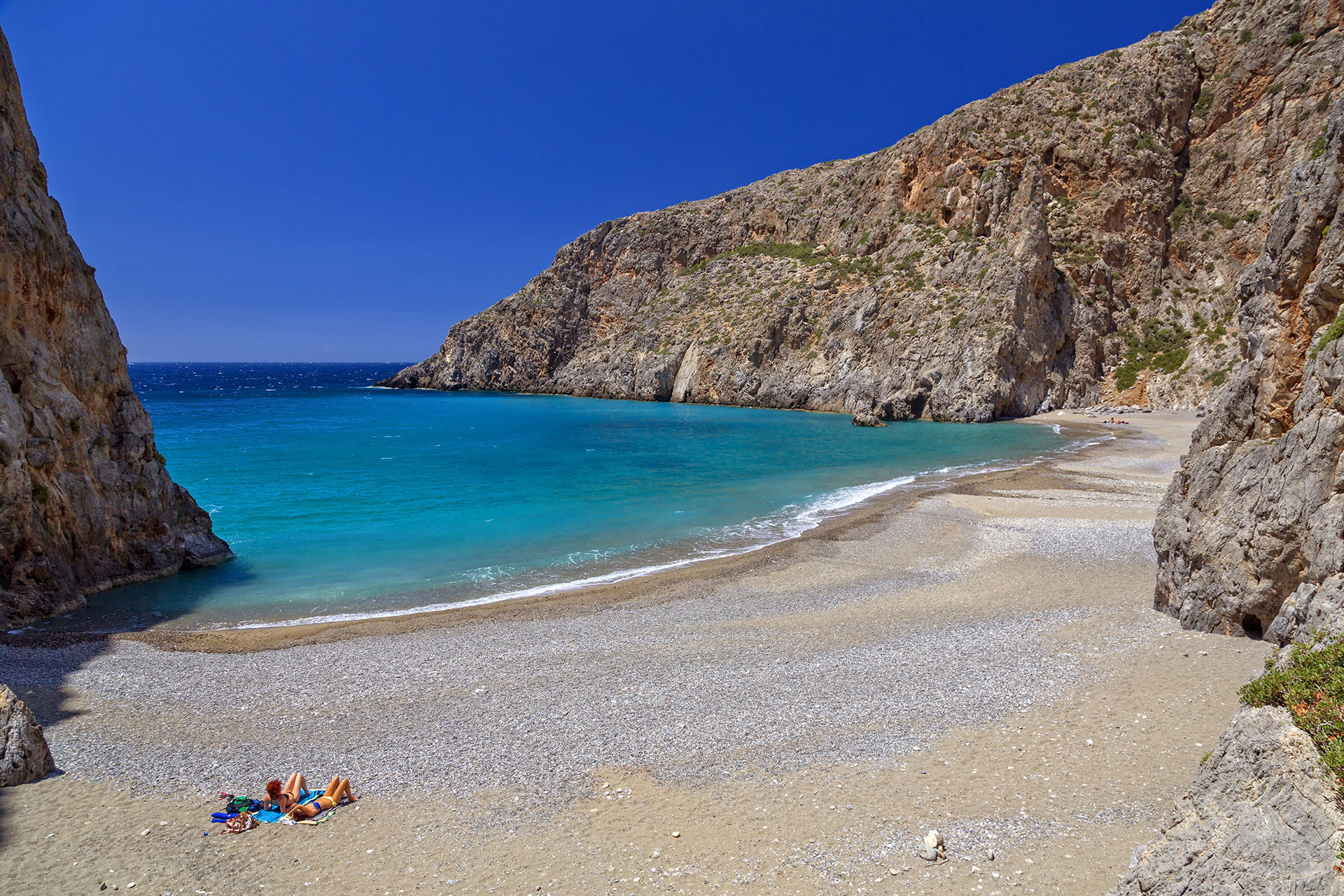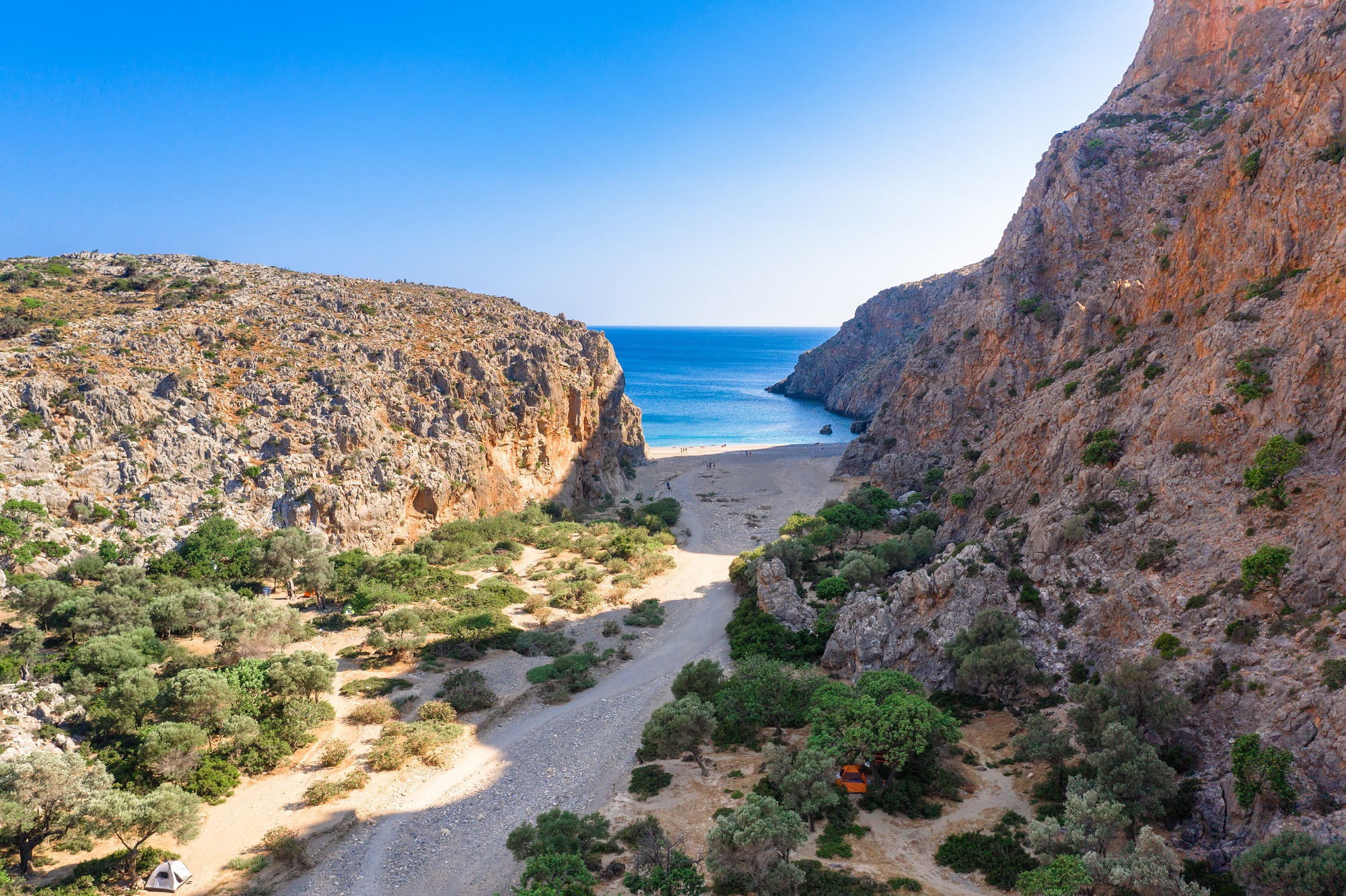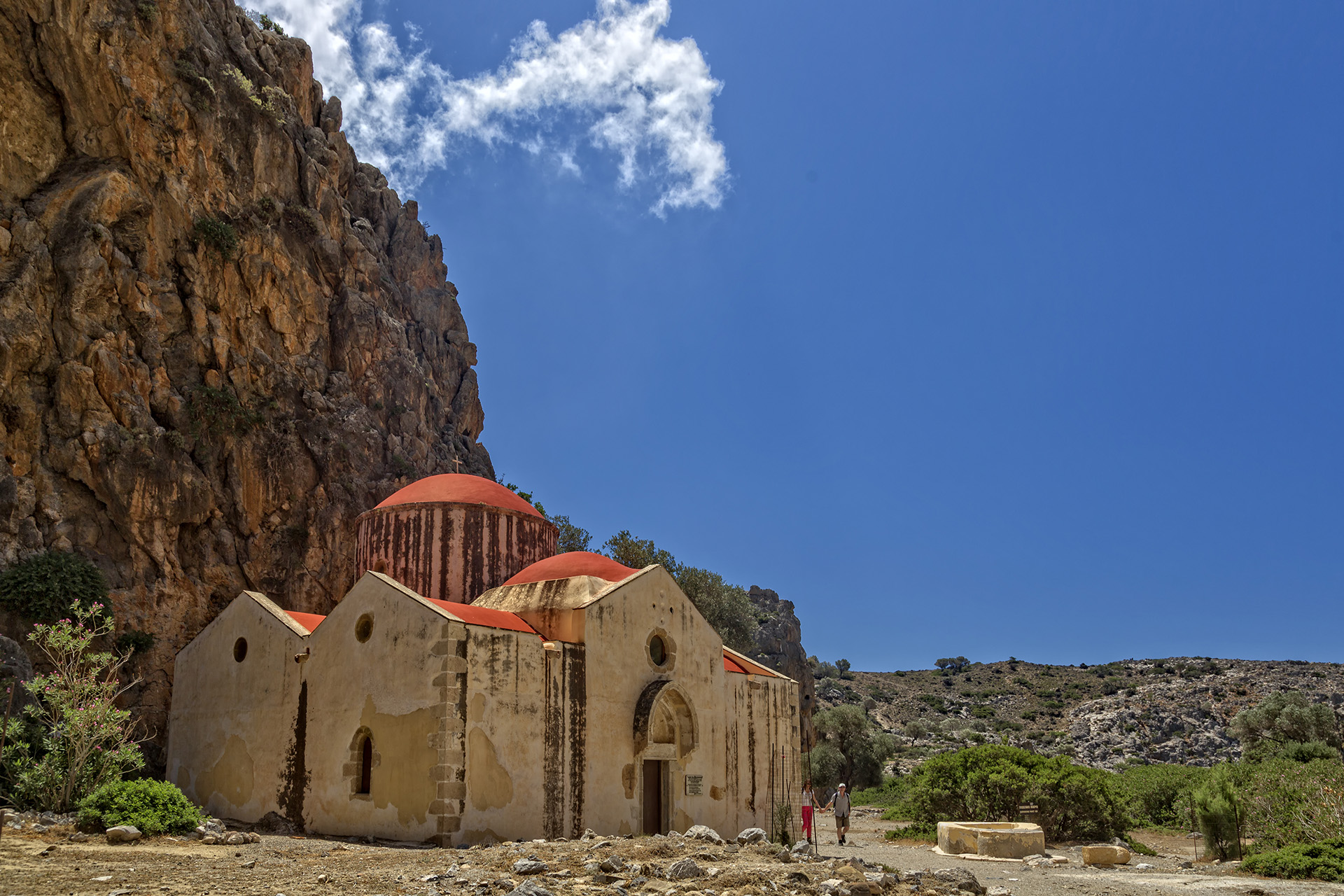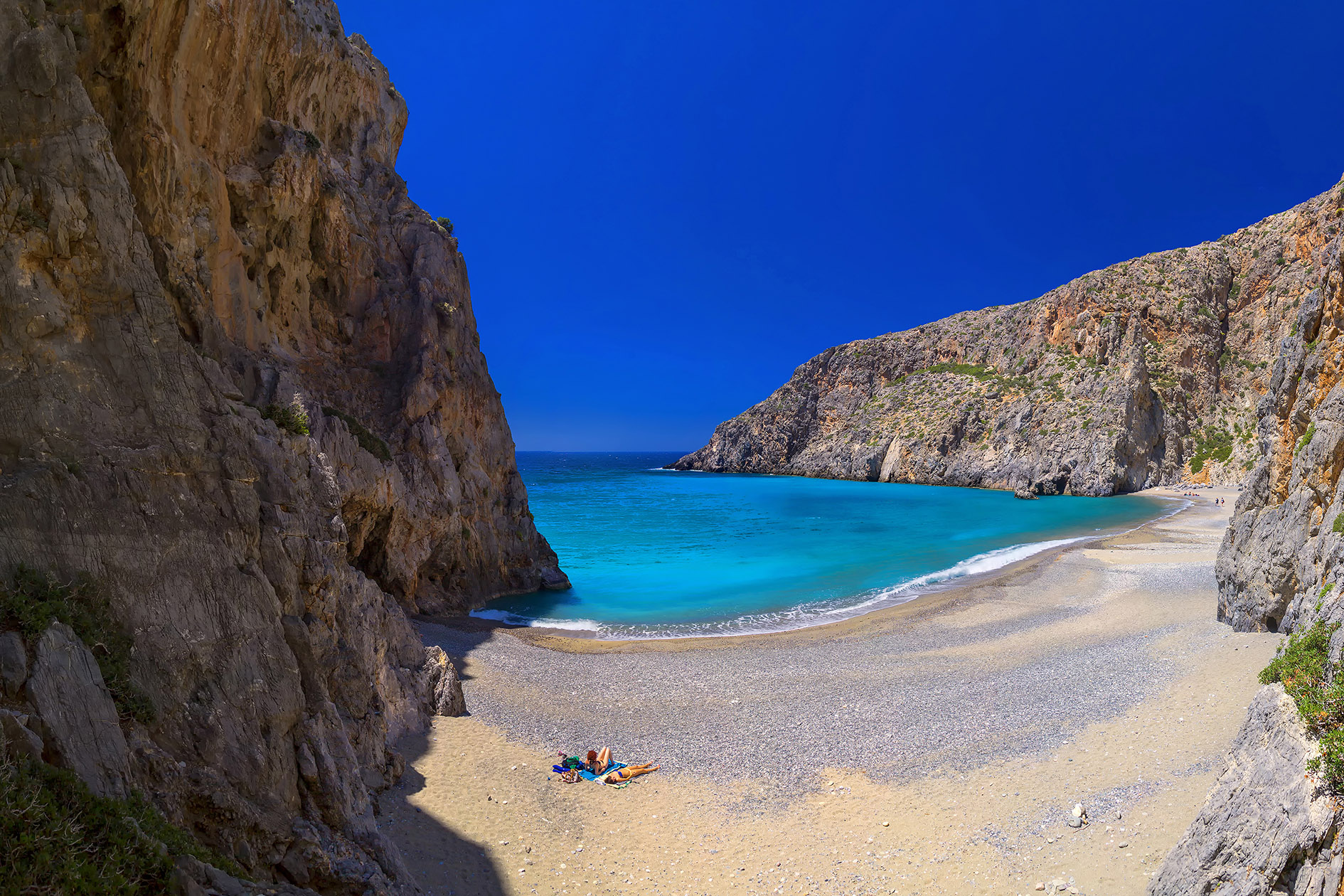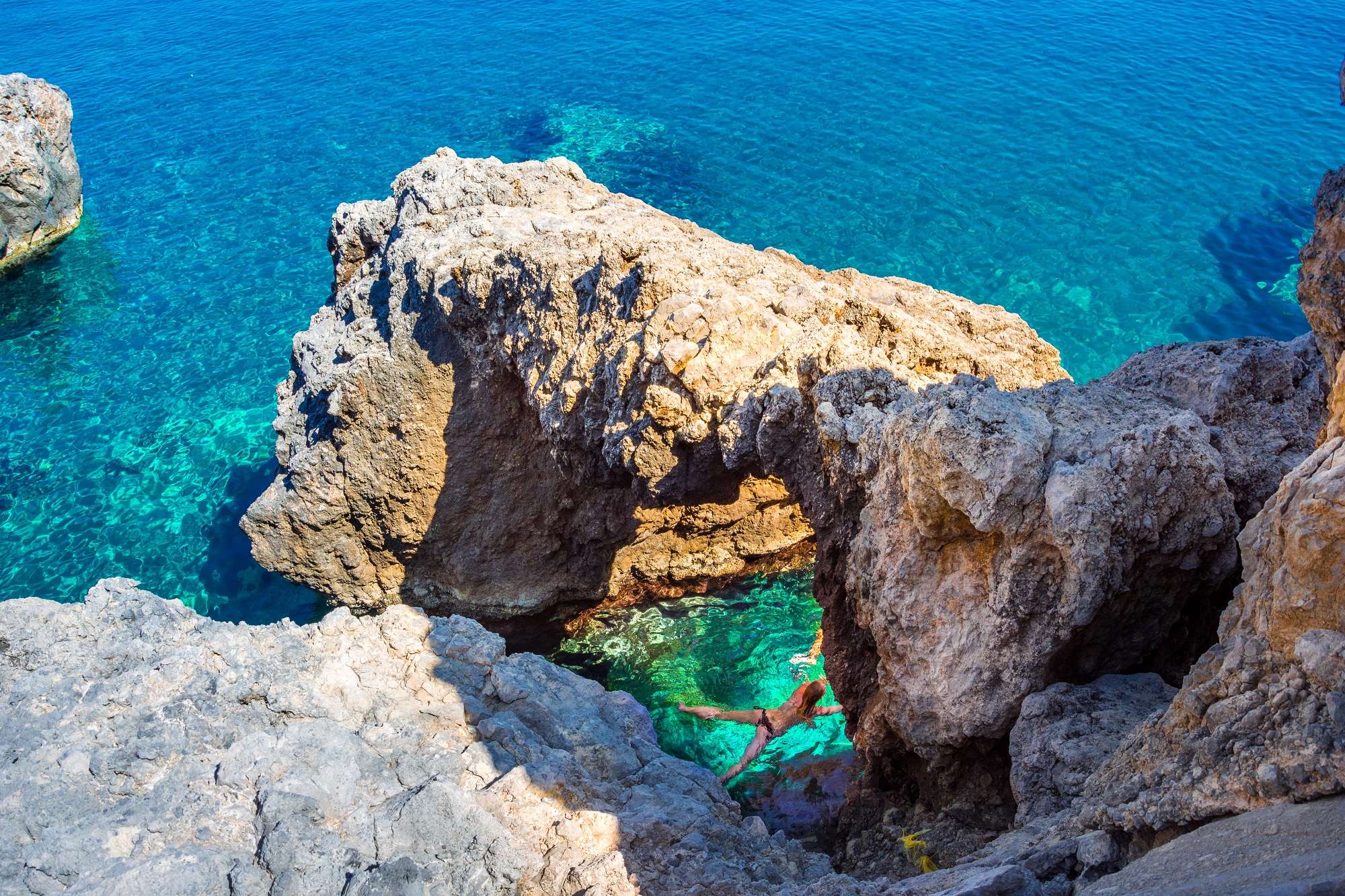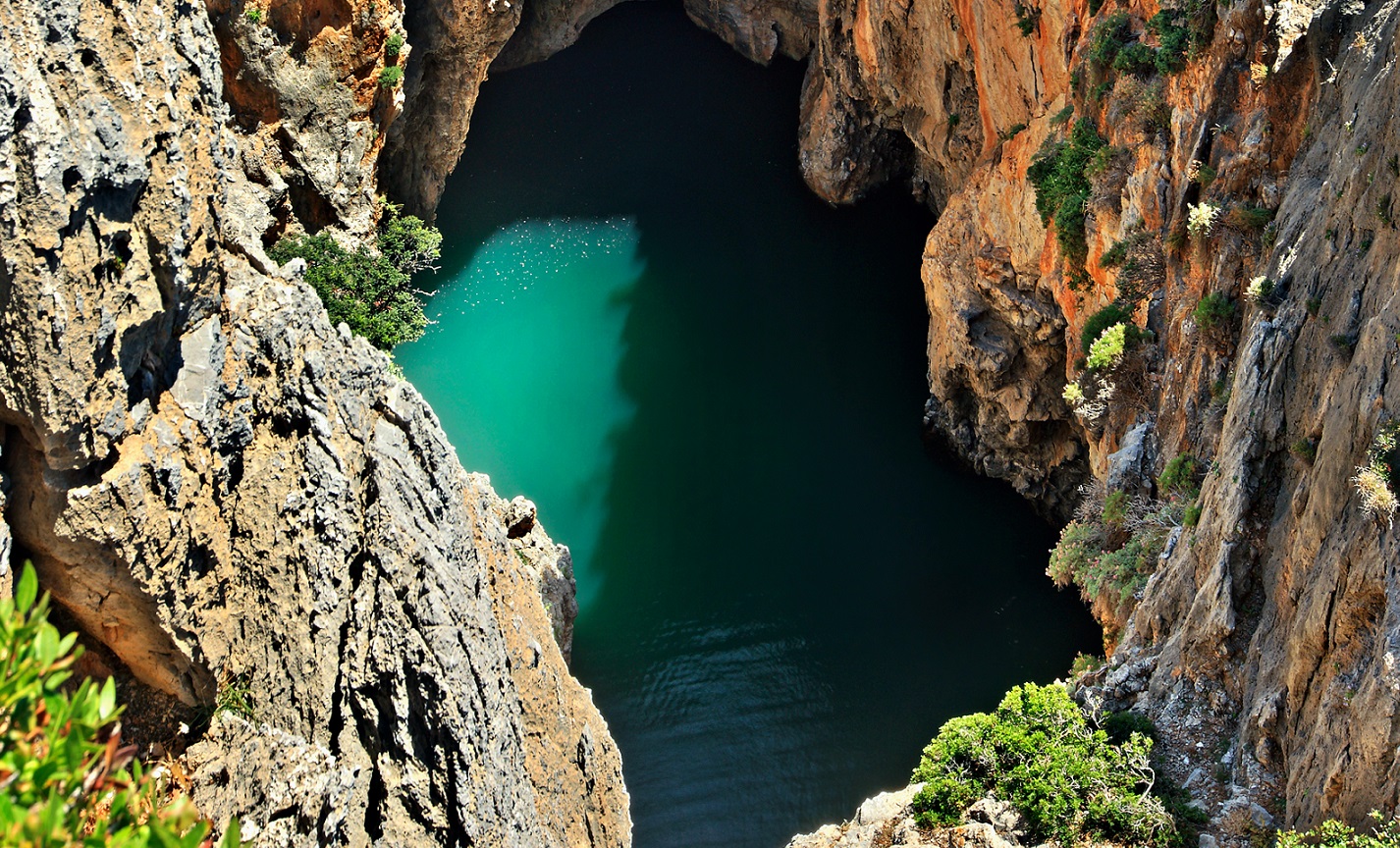It may remain unknown to those who have not carefully explored the Cretan landscape, but those who have visited Agiofarago speak of a dreamy beach· a slice of paradise surrounded by crystal blue waters and a wild backdrop of pristine wilderness.
Agiofarago is located in southern Crete, on the coast of the Heraklion regional unit, bordering the Libyan Sea. It is about 80 km away from Heraklion, in a remote location south of the famous Matala beach, where there is no road network. Nevertheless, it is not difficult to get there, as long as you plan your route in advance – either by boat or by hiking – making sure you bring all the essentials with you, as the beach is completely secluded.
Meanwhile, its special name is owed to the imposing Gorge of Saints that descends here, as in the past it was a favourite destination for those seeking to test their faith through asceticism and hermitism. The route through the gorge adds to the uniqueness of the overall experience, making the coast seem even more idyllic.
How to get there:
As already mentioned, you can’t get there by car because the area is isolated, you can only get there by boat or hiking. However, unlike other similar beaches in southern Crete (e.g. Glyka Nera, Doma), Agiofarago is somewhat more accessible. If you choose to go by sea, you can take a boat either from Kaloi Limenes, Matala or Agia Galini. Although the boat is still the easiest way to get there, the hike is considered to be more exciting and also happens to be quite easy, so it is suitable even for beginners.
Start from the monastery of Panagia Odigitria in the village of Sivas, at an altitude of 250 meters in the Asterousia Mountains, accessible by car. Of the two dirt roads you will see there, take the left one (towards Kaloi Limenes), driving carefully. After 4 km you will come across a sign for Agiofarago, which will direct you to a plateau on the right, where you can park your car. Locals recommend avoiding leaving the car under trees, as it can be damaged by local goats, who might use it as a lift to reach the top of the trees.
From there you will start walking – you’ll need around 20-30 minutes to reach the beach. The route crosses the Gorge of the Saints: a place of great natural beauty, full of wild olive trees, oleanders and various herbs, with cliffs interspersed with caves where the aforementioned ascetics lived. You will also pass a historic cave, where it was agreed that the hermits of the gorge would meet once a year to be counted and see who had died.
But the most impressive sight is the church of Agios Antonios, located in the gorge, about 250 meters away from the beach. Its origins go back to Byzantine times: originally it was smaller in size, taking its present form in the 14th or 15th century. There used to be a well with potable water outside, while a Minoan tomb was found (unfortunately looted), too.
The beach
The beach is 1.5 km long. The steep cliffs of Kapsala rise next to the fine pebbles. The area is full of such steep cliffs and near the exit of the gorge you will probably see some visitors testing the climbing field set up there. Agiofarago boasts crystal clear waters in seductive shades of blue. Usually, the sea is calm, but if it’s windy, it is recommended that you do not dare to dive in, as the waves can get really big and carry you away.
Just opposite the beach, in the open sea, you will also see a rocky islet. It is called Papadoplaka and is characterized by many troughs, from which the locals used to collect sea salt. Especially here, the seabed is quite fascinating, so be sure to bring a mask or sea goggles. On the west side, just below the capsule, you’ll see a natural archway where you can swim, feeling like you’ve dived into a small private pool.
Should you have your sneakers with you, it is worth following the uphill path that you will see on the rocks of the eastern side, in order to reach the gulch lake of Vourvoulitis with its brackish water, the composition of which is attributed to the fact that it communicates with the sea underground. Here, too, it is ideal for swimming, but note that the descent is dangerous and requires experience. In its eastern part you will also see wild pigeons, as they nest here.
Wild pigeons are not the only fauna in the area. While you’re swimming, you’re likely to see wild goats dwelling on the surrounding cliffs descend on the beach, targeting whatever food you’ve brought with you. So be sure to secure them before you go swimming. In any case, however, the spectacle certainly adds to the uniqueness of the experience at Agiofarago.
Read also:
Agios Pavlos: Secluded beach with superb waters, small Byzantine church
Glyka Nera: Hidden bay in Crete’s south, deep-blue waters, fresh-water springs
Two beaches in one -Domata, the secluded beach of southwest Crete



